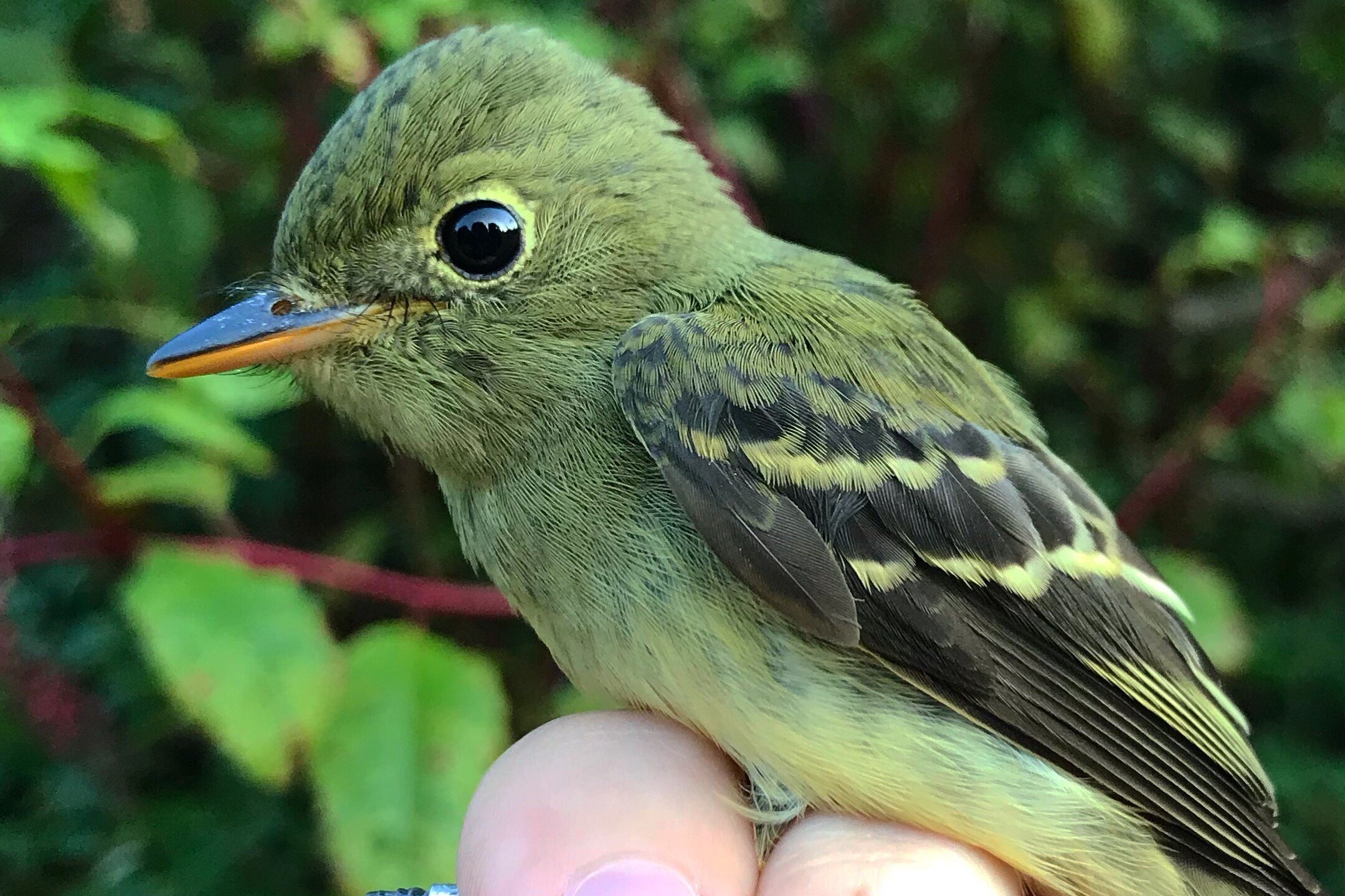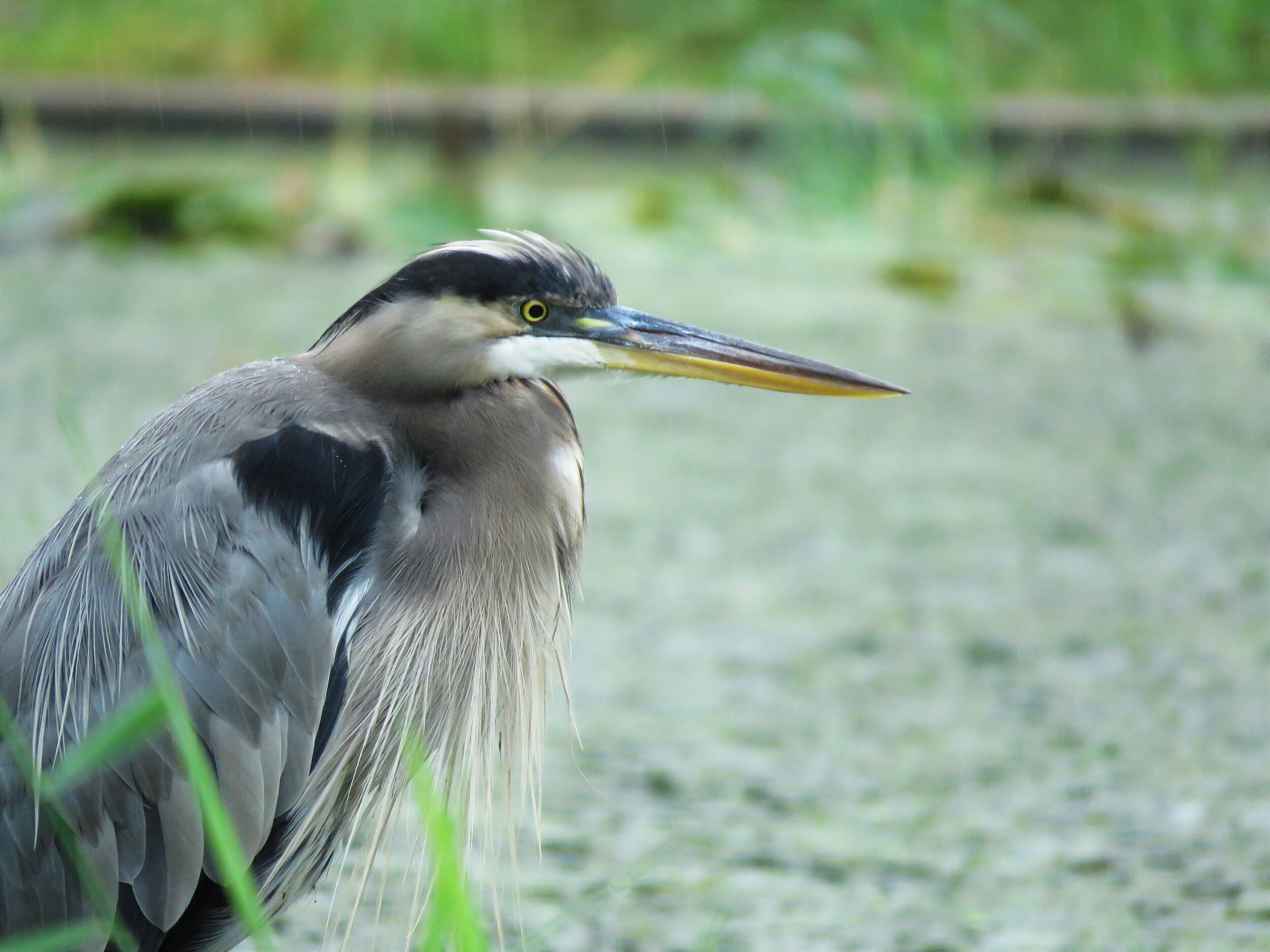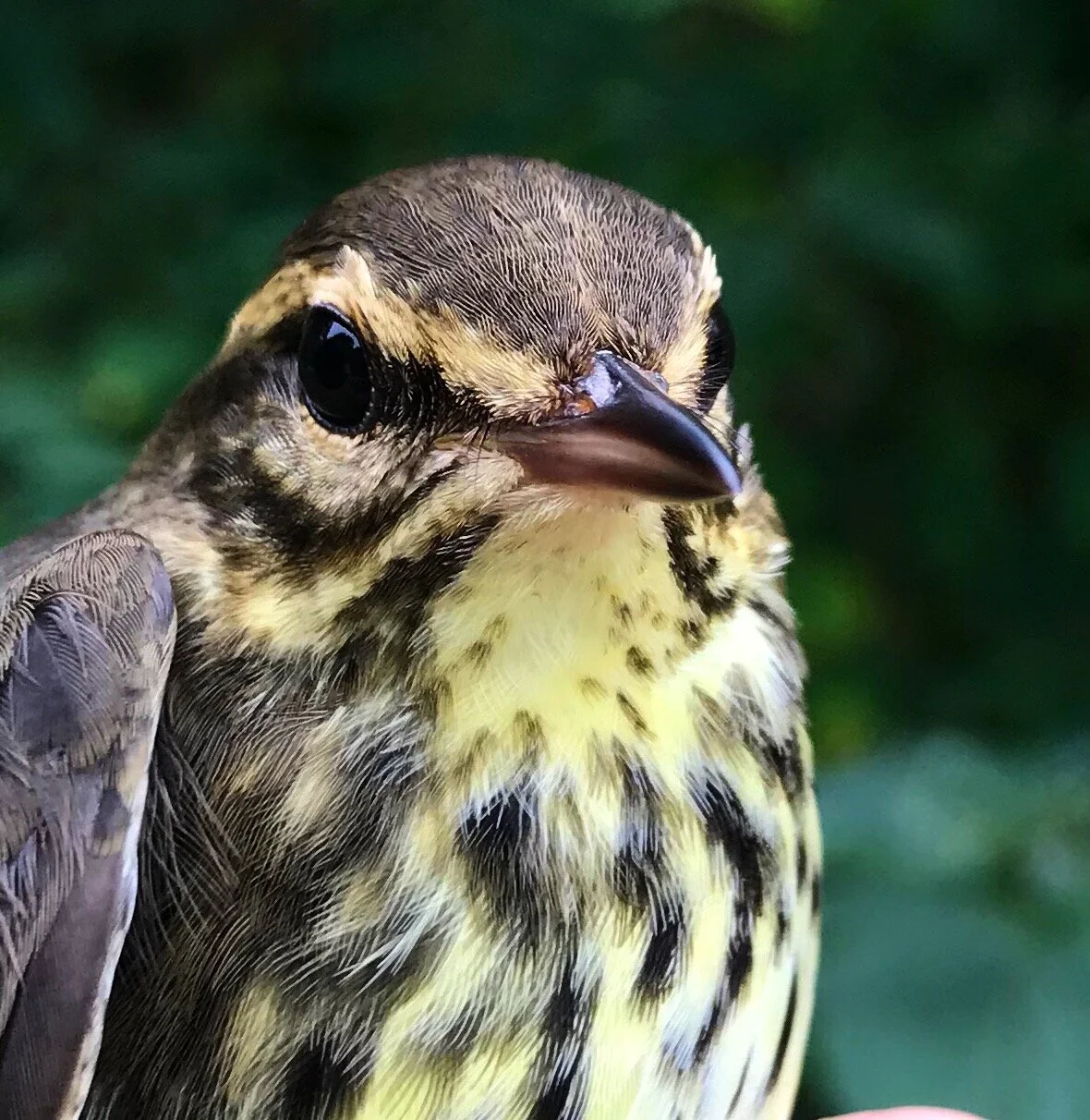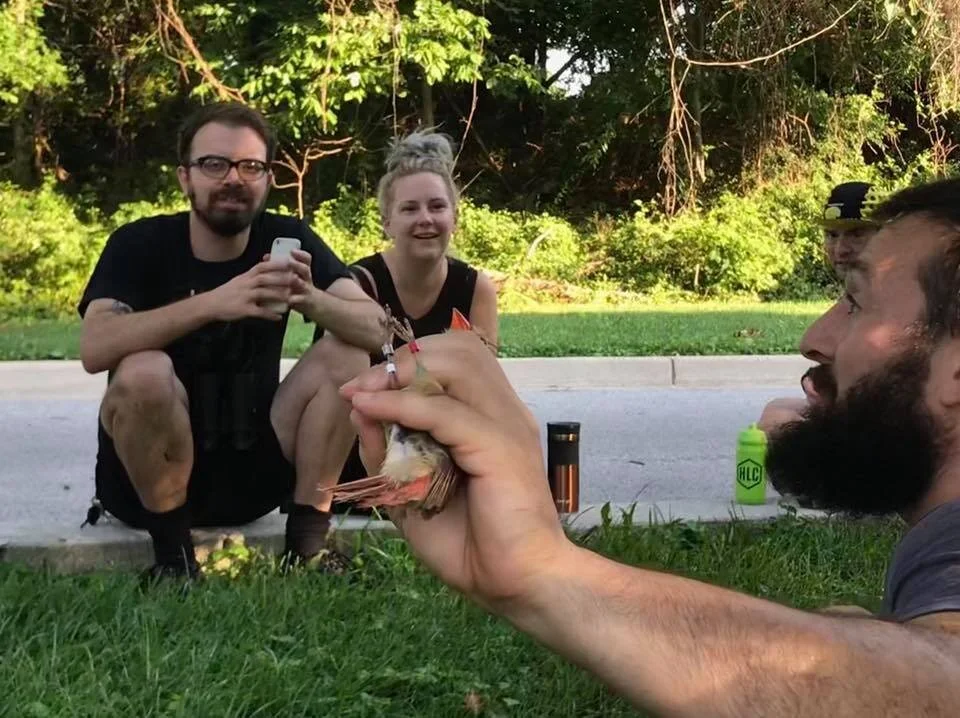
What is Bird Banding? And why do we do it?
Bird banding lets us study birds and their habitats
Very simply, bird banding is a way for scientists to study both individual birds and populations of birds, over time. Birds are captured using fine nets and when researchers remove a bird from the net, a small, numbered metal band is placed on the bird’s leg. This is basically like wearing a bracelet; the band doesn’t impede the bird’s comfort or movement in any way and can remain attached for years. The number on the band is unique, so if the bird is ever caught again that bird can be identified and where and when it was originally caught can be determined. This allows scientists to easily gather information about longevity, demographics, and other population dynamics.
Banding birds lets people connect with science
Bird banding also offers an incredible chance to connect people with nature and the scientific process. Seeing the birds that live alongside us in our parks and backyards up-close can spur people to become more engaged in their local greenspaces and build a better understanding about how our greenspaces provide valuable habitat. Bird banding also lets people see the scientific process unfolding in front of them and gives them a chance to learn from ecologists studying the wildlife that surrounds them on a daily basis.
Neighborhood Nestwatch
Birds of Urban Baltimore currently works with numerous local community organizations, nature centers, and others to band birds as a part of Smithsonian’s Neighborhood Nestwatch. As a part of this project, we band eight target species, common, backyard birds that community members can easily observe and identify using colored bands that we use, in addition to the standard, numbered, metal bands. In this way, communities can not only observe and learn about the scientific process that B.Ur.B and Smithsonian staff are engaged with, but also become involved themselves and directly contribute to the success of the project.
Migration Monitoring
When studying bird populations over time, banding migrating birds at a migration monitoring station can be an incredible tool. When banding migrant birds, nets are places in areas with high amounts of bird traffic and all the birds that get caught are banded. Banding occurs throughout the migration season, allowing B.Ur.B Baltimore staff to answer questions like: what species are using urban habitats as stopover habitats on migration? How long do migrants stay in these habitats? Are there difference in migration phenology when compared to non-urban birds? B.Ur.B is in the process of beginning a dedicated migration monitoring effort in Baltimore and we hope this will provide another valuable source of information about Baltimore’s urban birdlife.

Birds of Urban Baltimore is a non-profit whose costs, from staff salaries to equipment, are wholly covered by grants and private donations. Please consider donating today, so we can continue to provide quality and professional services to Baltimore’s communities.

